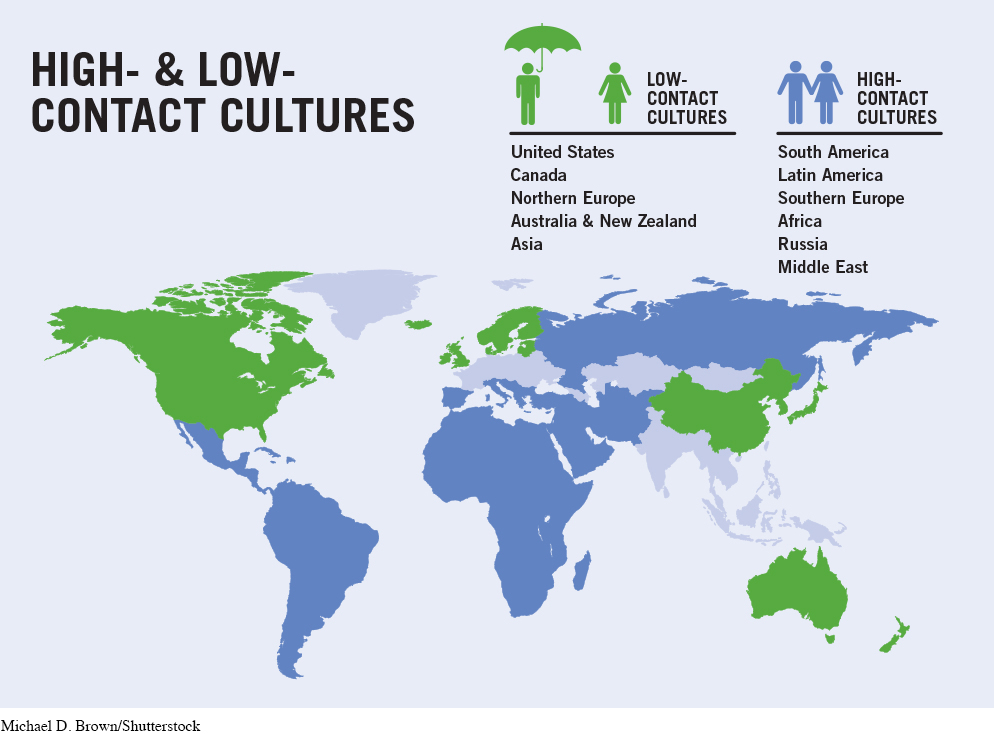Nonverbal Communication Is Influenced by Culture
The culture in which you were raised plays an enormous role in molding your nonverbal communication behaviors (Matsumoto, 2006). Different cultures have very different display rules—guidelines for when, where, and how to appropriately express emotion (Ekman & Friesen, 1975). As Chapter 4 discusses, people from Asian cultures are often taught to control their display of intense emotions (grimacing, scowling, large smiles) much more so than are Americans (Matsumoto, Takeuchi, Andayani, Kouznetsova, & Krupp, 1998). Within traditional Mexican culture, however, people are encouraged to openly express emotions, both positive and negative (Matsumoto, 2006).
Cultures also vary in the degree to which they emphasize close physical space, shared gaze, and physical contact during interaction. People from high-

Understanding cultural differences in nonverbal expression can help you improve your overall communication competence. For example, if you’re on a first date with someone from a low-